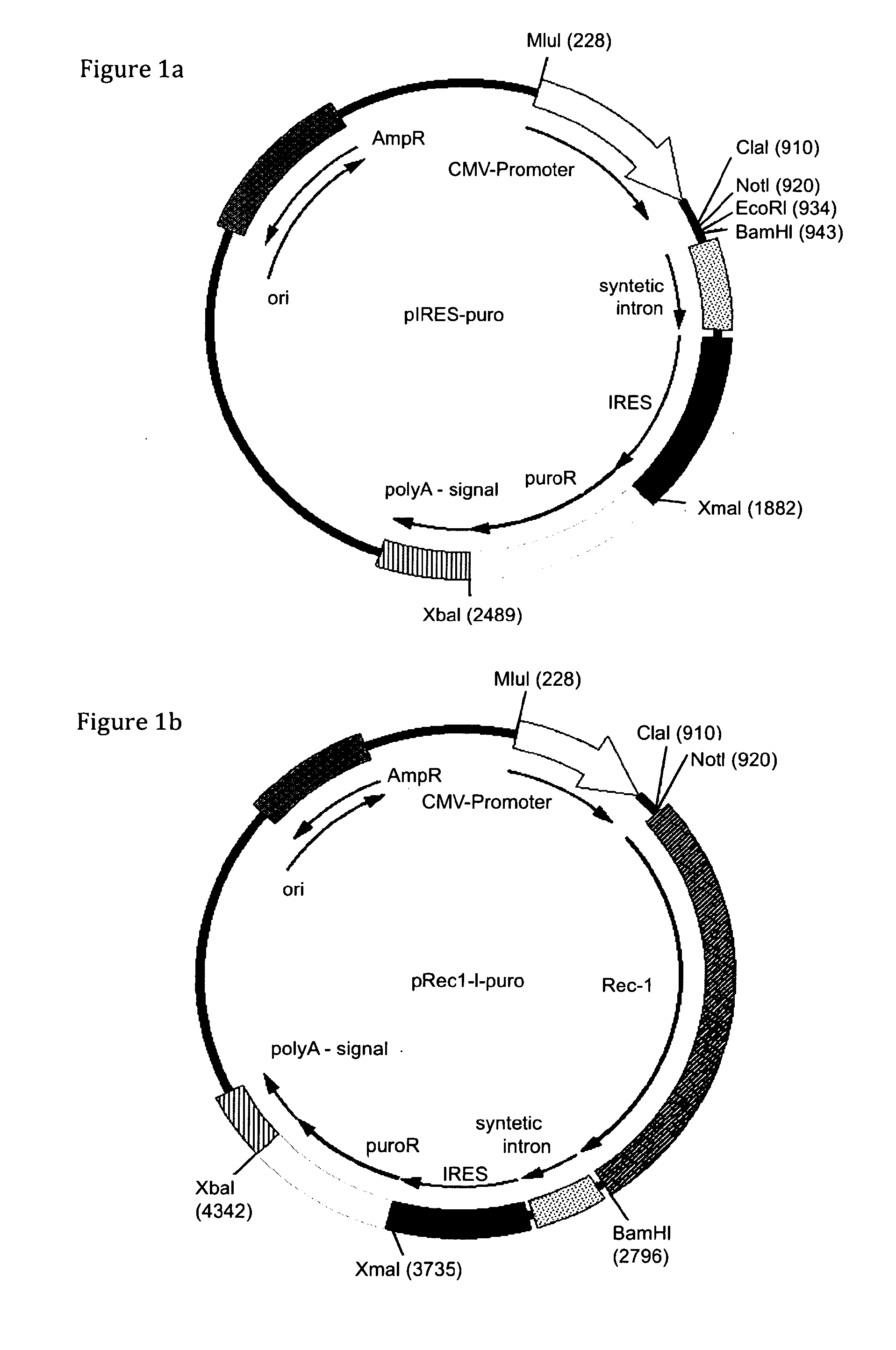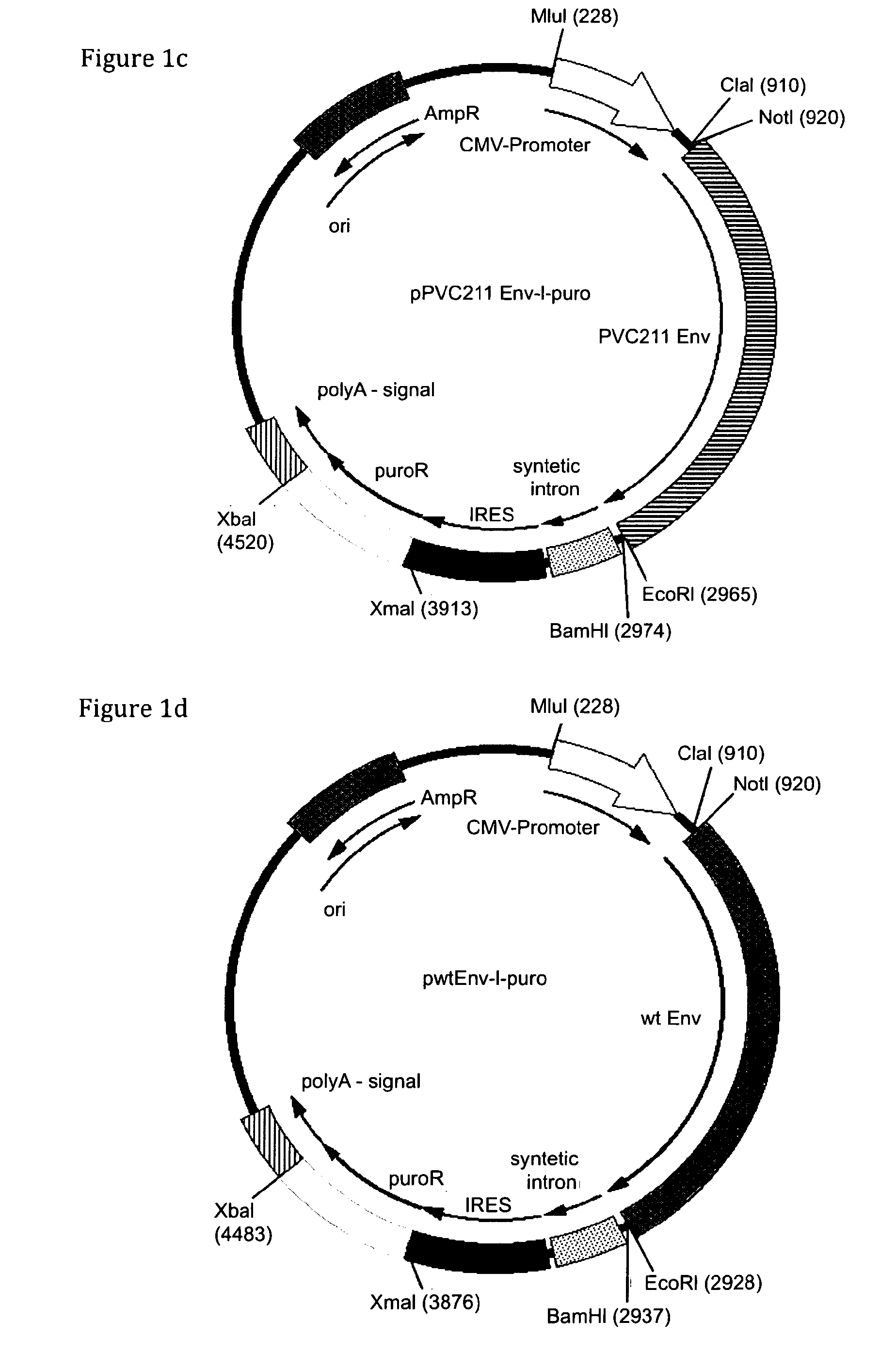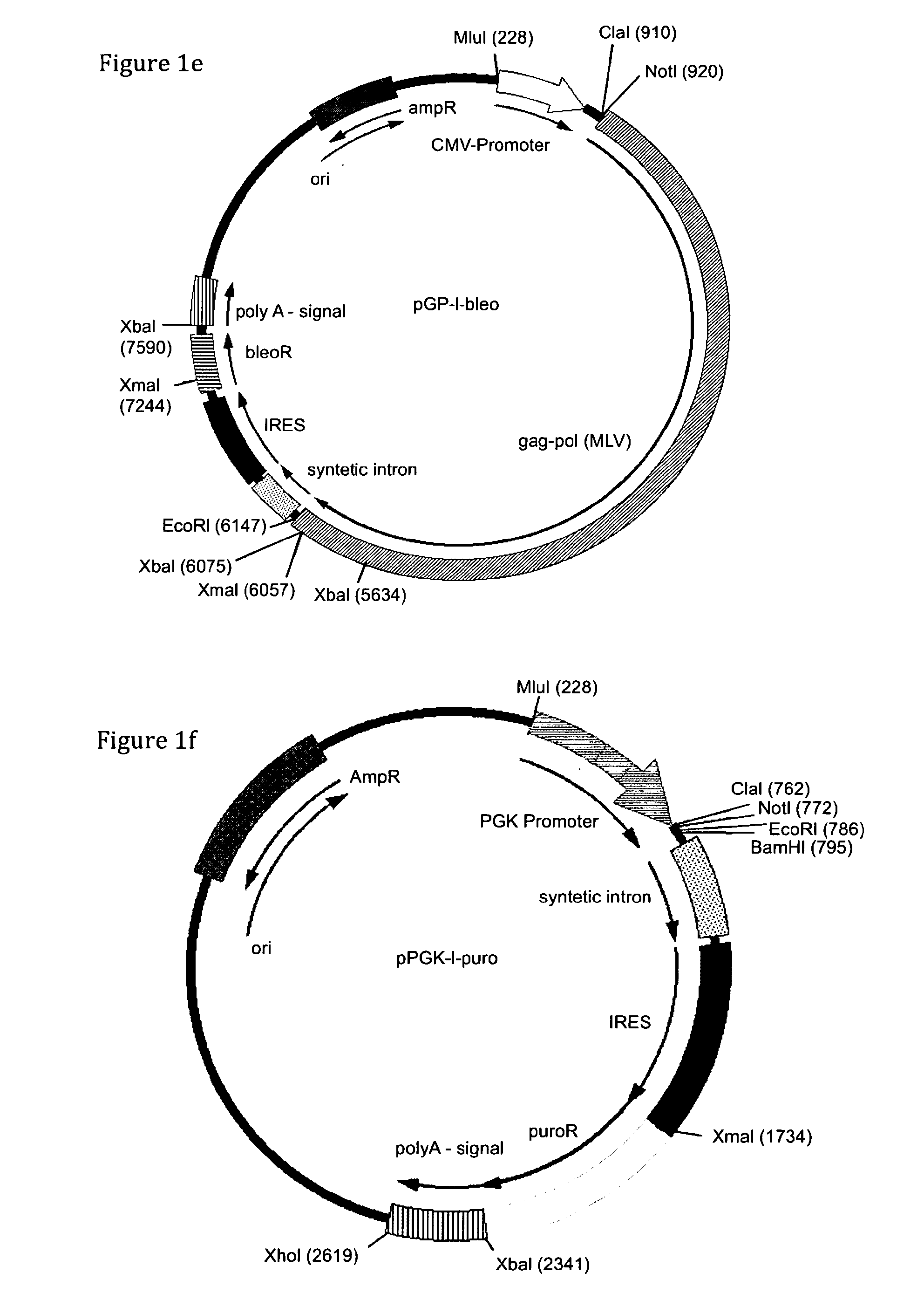Retroviral Vector Particles and Methods for their Generation and Use
a technology of vector particles and retroviral viruses, which is applied in the field of methods for the generation of retroviral vector particles, can solve the problems of inefficient dna transfection process and higher production cos
- Summary
- Abstract
- Description
- Claims
- Application Information
AI Technical Summary
Benefits of technology
Problems solved by technology
Method used
Image
Examples
example 1
Cloning of Expression Vectors
[0114]The detailed cloning strategy of expression vectors for viral structural proteins and viral receptors of different designs that can be used in the present invention is described below. Also described are methods for the stable maintenance of these vectors in target cells and producer cells, using antibiotic resistance markers.
1.1 Construction of Parental Expression Vectors
[0115]As a starting point for the construction of expression vectors the commercially available vectors pIRESneo and pIRESbleo were used (BD-Clontech, Mountain View, Calif.). These parental vectors contain a neomycin and bleomycin resistance marker gene respectively, flanked by unique restriction sites for XbaI and XmaI. In addition, these vectors contain the CMV IE promoter driving expression of the gene of interest and the resistance gene. 3′ of the promoter a simple multiple cloning site (MCS) for insertion of genes of interest to be expressed is followed by a synthetic intron ...
example 2
Cultivation and Establishment of Cell Lines Stably Expressing the Receptor of Ecotropic MLV (Rec1)
[0141]All CHO cells (CHO-S (Invitrogen), CHO T-REx™ (Invitrogen), CHO-K1 (DSMZ)) and murine pre-B 1624-5 cells were expanded in IMDM supplemented with 10% FCS and 50 μM beta-mercapthoethanol. Human fibrosarcoma HT1080, HEK and BHK cells were cultured in DMEM supplemented with 10% FCS and L-Glutamine (2 mM). To establish cell lines stably expressing the ecotropic receptor Rec-1, CHO, BHK and HT1080 cells were seeded at a density of 1×105 cells in 2 ml of respective media in six-well tissue culture dishes (Nunc), 5 to 24 hours prior to transfection. 1 μg to 3 μg of the respective Rec1-encoding pIRES-variants were transfected (see FIG. 1b) using FuGENE®6 (Roche) following the manufacturers' instructions. Two days post transfection, transfected adherent cells were detached using 1 mM EDTA / PBS, suspended and seeded in 15 cm dishes. The following day antibiotic-containing media were applied t...
example 3
Generation of Ecotropic MLV Vector Particles and Transduction of Target Cells
[0142]For the generation of ecotropic MLV-based vector particles a triple co-transfection approach employing human embryonic kidney (HEK) cells was used. HEK cells were seeded at a density of 3×106 cells in 30 ml DMEM supplemented with 10% FCS and L-Glutamine (2 mM), in a 15 cm plastic tissue culture dish. Upon re-attachment of the cells to the bottom of the dish, 5 μg each of the transfer vector MigR1, the packaging construct VPack-GP (Stratagene) and the envelope construct wtEnv-I-puro were transfected using 1.5 ml unsupplemented DMEM and 45 μl FuGENE®6 (Roche) according the manufacturers' instructions. Two days post transfection, viral vector particle containing supernatants were harvested into a 50 ml-Falcon tube and subjected to a centrifugation step to obtain cell-free vector particle preparations. Using an Eppendorf centrifuge (model 5810 R), contaminating packaging cells were pelleted at 4° C. and 1...
PUM
| Property | Measurement | Unit |
|---|---|---|
| Concentration | aaaaa | aaaaa |
| Fraction | aaaaa | aaaaa |
| Fraction | aaaaa | aaaaa |
Abstract
Description
Claims
Application Information
 Login to View More
Login to View More - R&D
- Intellectual Property
- Life Sciences
- Materials
- Tech Scout
- Unparalleled Data Quality
- Higher Quality Content
- 60% Fewer Hallucinations
Browse by: Latest US Patents, China's latest patents, Technical Efficacy Thesaurus, Application Domain, Technology Topic, Popular Technical Reports.
© 2025 PatSnap. All rights reserved.Legal|Privacy policy|Modern Slavery Act Transparency Statement|Sitemap|About US| Contact US: help@patsnap.com



